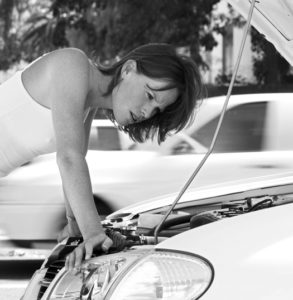 Internal combustion engines convert fuel into mechanical energy. With that process comes a lot of heat. Your vehicle’s cooling system manages the heat, making sure that the engine stays cool enough to operate properly. When engine overheating occurs, it can quickly lead to a very dangerous and destructive situation. Once engine exceeds 230 degrees Fahrenheit, the engine overheats. At temperatures above 245 degrees Fahrenheit, engine damage may occur. As heat continues to increase, the different rates of thermal expansion cause metal to distort.
Internal combustion engines convert fuel into mechanical energy. With that process comes a lot of heat. Your vehicle’s cooling system manages the heat, making sure that the engine stays cool enough to operate properly. When engine overheating occurs, it can quickly lead to a very dangerous and destructive situation. Once engine exceeds 230 degrees Fahrenheit, the engine overheats. At temperatures above 245 degrees Fahrenheit, engine damage may occur. As heat continues to increase, the different rates of thermal expansion cause metal to distort.
There are the six basic parts of your cooling system. It is important to have these components checked on a regular basis to avoid a hot engine mess.
- Coolant – Anti-freeze and coolant are critical to your car’s heating and cooling system. Having the coolant flushes performed per your owner’s manual recommendation is extremely important in assuring your engine runs clean and cool.
- Radiator – Have your radiator inspected to be sure it is in good condition, and that the radiator core has not been damaged by salt corrosion. Another issue to watch for is a plugged radiator core. This problem can happen when coolant flushes are not performed.
- Cooling Fans – A cooling fan failure can lead to engine overheating problems. In some cases, trouble with the air conditioning system can be a sign that you have a cooling fan problem. Cooling fans should be regularly inspected to avoid engine problems.
- Thermostat – There is no set mileage that predicts when it will fail, but when it does, it’s important to replace it as soon as possible. A bad thermostat is a common cause of engine overheating. A failing thermostat can also be indicated by the check engine light illuminating or the car heater not working.
- Water Pump – A compromised water pump will often cause a coolant leak, so if you notice the coolant level dropping at a faster rate, you should have it checked as soon as possible. An experienced auto technician will be able to spot a water pump that is about to fail.
- Belts and Hoses – The belts and hoses in your cooling system should be inspected to make sure they are tight and in good condition. Cracks or deterioration of the rubber are signs of trouble.
